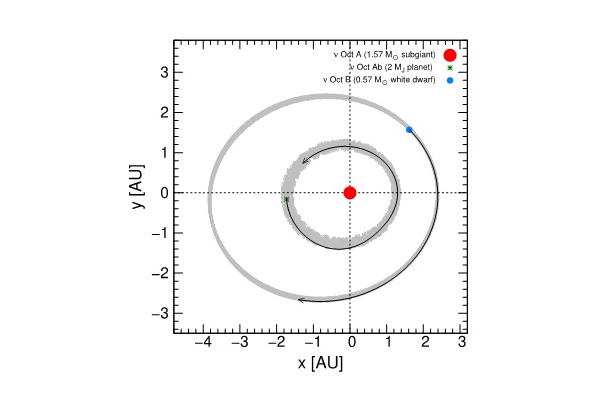ON THE CHARACTERISATION AND ORIGIN OF THE CIRCUM-PRIMARY RETROGRADE PLANETARY ORBIT IN ν OCTANTIS
Seminars
Semester 2
Close-in companion stars are expected to adversely influence the formation and orbital stability of circumstellar (S-type) planets by tidally truncating protoplanetary discs, impeding mutual accretion of planetesimals, and narrowing dynamically stable regions. It apparently explains the observed dearth of S-type planets in tight binary star systems. Despite strong theoretical grounds against its formation and the absence of observational precedents, Octantis, whose stellar components have a mean separation of 2.6 AU, has been suspected for almost two decades of hosting a retrograde and exceptionally wide circum-primary planet. Motivated by new radial velocity data that consolidate the planet hypothesis and a critical discovery that the companion star is a white dwarf, we characterised the present-day orbital configuration of the planetary system based on stable dynamical fits and constrained the evolutionary history of the planet by exploring possible settings of the primordial binary orbit and different binary evolution scenarios. This study provides evidence for the role of post-main-sequence stellar evolution in the origin and evolution of planetary systems with unprecedented parameter space.










